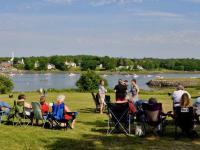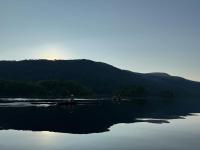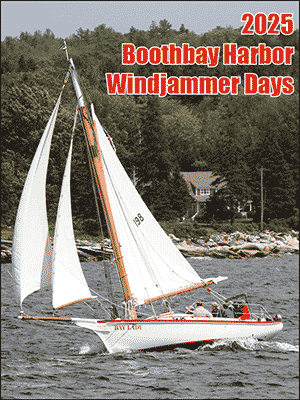Managing Megunticook River
The objective here is to distinguish truth and verifiable fact from disinformation and misleading rhetoric. We will leave the conversation of how lies, if repeated often enough, become fact, for another time. The Interfluve report titled “Montgomery Dam, Megunticook River, Camden, Maine, May 3, 2019” contains verifiable fact, however the informed reader realizes it also contains some opinion and misleading statements.
If you engage a consulting firm which specializes in dam removal projects, you will, not surprisingly, receive an assessment with a decidedly dam removal slant. I encourage everyone to familiarize themselves with the Megunticook River through direct observation.
Let’s consider some basic truths we can verify by first-hand observation which pertain to our immediate concern; the fate of the falls and millpond created by Montgomery Dam.
For one: The Montgomery Dam cannot possibly be the cause of, or in any way involved in, or responsible for “flooding” of Main Street or any area up stream.
The surface of the Main Street roadway is a full 7.5 feet above the spillway of the dam. This is easily verifiable, when the water in the pond is just cresting the spillway, you need only stand on the sidewalk next to The House of Logan and measure from the water surface to your feet. If you’re still not convinced you can refer to the Interfluve Report page 53 text and figure 40, and page 101 text and figure 73. In its 200-plus years of existence Montgomery Dam has never been, nor could it be responsible for the river exceeding its banks.
Two: Removing the Montgomery dam will not provide “natural” anadromous fish access to Megunticook Lake. Even if fish could manage to ascend the “naturalized” ledges at the head of the harbor, man made fish ladders of some kind will also be needed at the Megunticook Lake dams, the Seabright dam, and several other dams and natural steps in the 140 foot total drop from the Lake to the Harbor.
It seems very unlikely there has been or could be a fish run from salt water into the Megunticook even in its “natural” state. If an attempt is made to introduce alewives and other anadromous fish into the Megunticook, how will the cost of dam removal and construction of fish ladders be distributed? We are being told local tax revenue will not be involved. Given the current state of affairs in Washington, it would be extremely naive to think federal funding will be available. Hypothetical questions have hypothetical answers. There should be a mature cost/ benefit analysis of the construction and annual maintenance of all the fish ladders required. This has not been provided to us, so cost comparisonat this point is not possible. The Interfluve Report does conclude preserving the dam as being the least expensive option.
Three: The belief there will still be a waterfall if the the dam is removed is naive and unrealistic. The proposal involving the dam’s removal refers to returning the river’s course to its “original natural channel”. With the dam and park wall removed, obviously there would no longer be a mill pond or a waterfall. There would be a gradual and greatly reduced descent, and no water at all over the ledges on the public landing side.
Four: Opening the sluice gate of the dam during a heavy rain event is unnecessary. Taking that action is relatively ineffectual; it is a waste of town employee time. The amount of water passing through the sluice gate is a small fraction of the total when there is 10 inches of water flowing over the spillway.
The only time the sluice gate needs to be opened is to drain the millpond during a low flow period to provide access to infrastructure adjacent to the river.
Five: The Montgomery Dam is not connected in any way to the effects of climate change or sea level rise. Obviously, the Megunticook watershed is not responsible for increased water levels in Camden Harbor, let alone the Gulf of Maine or the world’s oceans. An argument is made, climate change may bring about more frequent and more severe rain events. The argument is well taken, some data based forecasts/predictions may indicate a trend in that direction. We should take action which will lead to best realistic preparedness.
Flow management is critical to successful function of the Megunticook River system. Consideration of flow management leads us to a very important observation. Megunticook Lake combined with Norton Pond is the only significant containment area of the entire watershed. The Molyneaux Dams, lately referred to as the East / West Dams create Megunticook Lake, the reservoir which allows us to contain runoff, to hold back water, and to control the release down stream.The Seabright pond is too small and shallow to be of significant containment value during an exceptional event.
The Seabright dam and the river’s other dams and bridges do provide constriction to help slow the flow during exceptional events which would otherwise be an uncontrolled “natural” torrent. The dams serve a critical purpose in allowing us to moderate a “natural” flow of untold consequences. Control of flow allows us to dwell in areas now, which would have been uninhabitable in the river's “natural” state. In the river’s natural condition there would have been uncontrolled seasonal “flooding”. The “free the river “ perspective does not take us in the direction of responsible management and resiliency.
Honestly, we do not practice “flood control”. Once “flooding” occurs we have obviously lost control. We practice judicious, diligent water flow management and containment. We have long standing, simple guidelines regarding the management of seasonal lake levels established by our predecessors, based on many years of experience. Traditionally, lake levels on Megunticook were maintained 25 to 30 inches below the spillway of the east and west dams from October 1 to Ice Out. With future rain fall predictions/trends taken into consideration, due diligence may require adjustment to existing tried and proven guidelines.
It’s important to observe that the existing, traditional guidelines were being implemented during the October 30 event of 2021. The Halloween event was roughly 5.5 inches of rain in about six hours, this is in the range of the fabled “100-year event”. Taking the action of lowering the lake to traditional levels in early October accomplished exactly what was intended by design. It provided space for runoff to accumulate in the lake, thereby delaying potential flow in the river downstream. The security and resiliency of the Megunticook River was clearly demonstrated during the past Halloween rain event. A search on the internet will reveal the extent of damage and flooding caused by the event in towns near by and the Midcoast area. The storm caused many cases of roads and culverts being washed out and erosion elsewhere, but no damage or erosion was sustained by any of the dams or bridges or banks of the Megunticook River.
There was a temporary accumulation of water on Main Street during this event as a result of storm drain screens being clogged by leaves. A storm drain system which, by the way, was extensively renewed the previous summer. This situation was completely avoidable. The severity of the event may not have been totally foreseen, but the accumulation of leaves in the fall is entirely predictable, remove them, problem solved. The excess water on Main Street during the event was not connected in any way to the river or Montgomery Dam.
In truth, fact is not all we must take into consideration. When all the mechanical, physical and biological elements have been evaluated, this is ultimately, in my opinion, a concern of aesthetics. The undeniable beauty, totally unique qualities of the falls and pond, and Harbor park translate directly into prosperity for our community, undeniably an attraction for visitors. Perspective is often informed by matters of the heart. I, as do many citizens and visitors, love the waterfall and mill pond created by the dam at the head of the harbor. I have enjoyed being in its presence most of a lifetime and have been reassured by the knowledge of its existence.
The mill pond and falls are, by design, an integral element in the total aesthetic of Harbor Park. I sincerely believe no part of the park can be destroyedor altered without compromising the total. I have the utmost respect for the combined creative genius of the Olmsted firm and Mary Louise Bok.
Let’s hope the decision regarding the future fate of the falls, mill pond, and Harbor Park is not driven solely by the questionable availability of Federal funding. Vote NO on Article 7 June 10.
Ron Hawkins lives in Camden





























